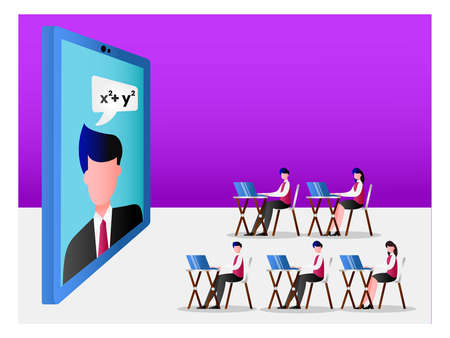Introduction to Peer Mentorship in the U.S. Job Market
Peer mentorship has rapidly emerged as a crucial strategy for professional development in the American workforce. In today’s highly competitive job market, traditional hierarchical mentoring is being complemented by peer-to-peer support systems that focus on collaboration, shared learning, and mutual growth. As industries evolve and workplace dynamics shift, employees are increasingly seeking out peers who can provide relevant insights, emotional support, and practical guidance tailored to real-world challenges. This trend reflects a growing recognition that building strong networks isn’t just about climbing the corporate ladder—it’s about creating communities where knowledge flows in all directions. With employers placing greater emphasis on adaptability, teamwork, and continuous learning, peer mentorship is becoming a vital tool for navigating complex career landscapes and achieving long-term success in the United States.
2. Building Authentic Professional Relationships
In the context of peer mentorship within the U.S. job market, building authentic professional relationships is fundamental to career growth and satisfaction. American workplaces value open communication, respect for diversity, and mutual benefit, which are essential components when forming genuine mentorship connections. Here are some best practices tailored to U.S. workplace culture:
Best Practices for Authentic Peer Mentorship
| Practice | Description | Example in U.S. Context |
|---|---|---|
| Open Communication | Foster transparent and honest conversations to build trust. | Regularly schedule one-on-one check-ins and provide constructive feedback. |
| Cultural Awareness | Recognize and respect diverse backgrounds and perspectives. | Acknowledge cultural holidays and be mindful of different communication styles. |
| Goal Alignment | Set clear, shared objectives for the mentorship relationship. | Define specific learning outcomes or career milestones together. |
| Mutual Benefit | Ensure both mentor and mentee gain from the relationship. | Mentee shares new tech skills; mentor offers industry insights. |
| Consistent Engagement | Maintain regular contact and follow through on commitments. | Monthly coffee chats or virtual meetings to discuss progress. |
Cultivating Trust and Respect
Trust is the foundation of any successful mentorship. In American workplaces, this means honoring confidentiality, respecting boundaries, and valuing each others time. Setting expectations early on—such as preferred communication channels and response times—helps avoid misunderstandings. Additionally, showing appreciation for your peers insights fosters a supportive environment where both parties feel valued.
Navigating Hierarchies and Informal Networks
The U.S. workplace often features both formal structures (like official mentorship programs) and informal networks that operate across departments or job levels. Actively participating in employee resource groups, professional associations, or company-sponsored events can facilitate introductions to potential mentors or mentees. Remember that meaningful connections often develop outside traditional reporting lines, so remain open to networking opportunities across all levels of your organization.

3. Expanding Networks Through Peer Support
In the competitive landscape of the U.S. job market, building a strong professional network is often just as important as having the right skills or experience. Peer mentorship serves as a practical bridge, allowing individuals to access and grow their networks in authentic and meaningful ways. Unlike traditional hierarchical mentoring, peer mentors are typically at similar stages in their careers, which fosters a sense of trust and openness crucial for effective networking.
Peer mentors help each other by making introductions across industries, sharing insider knowledge about local companies, and recommending relevant professional events or organizations. For instance, one peer might introduce another to an alumni group on LinkedIn or invite them to attend an industry mixer. This kind of support is especially valuable in the U.S., where many jobs are filled through referrals and personal recommendations rather than open applications.
Additionally, because peer mentors come from diverse backgrounds and have unique connections, they can offer access to networks that may otherwise be difficult to reach. This diversity enriches the group’s collective perspective and exposes members to new career paths, company cultures, or even geographic regions within the United States. The mutual exchange of information helps everyone involved to identify emerging job opportunities and stay ahead of market trends.
Ultimately, expanding professional networks through peer support isn’t just about collecting contacts—it’s about building genuine relationships based on trust, reciprocity, and shared goals. These relationships often lead to collaborative projects, job referrals, and long-term career advancement for everyone involved.
4. Practical Skills Development and Career Guidance
Peer mentorship in the U.S. job market is not just about networking—it’s a hands-on approach to building practical skills and receiving actionable career guidance. Mentors who have recently navigated the American workplace can offer invaluable advice, helping mentees understand what truly matters to employers and how to adapt to industry demands. For example, many peer mentors share their personal experiences with resume optimization, interview techniques, and the use of LinkedIn to connect with recruiters. These real-world insights are often tailored to specific industries, providing mentees with an insider perspective that accelerates their job search success.
Real-World Examples of Peer Mentor Support
| Mentorship Focus | Example in Action |
|---|---|
| Job Search Strategies | A peer mentor shares how they used targeted online applications combined with informational interviews to land a tech role in Silicon Valley. |
| Industry Insights | An experienced finance professional discusses current trends in fintech and what skills are now most sought-after by Wall Street firms. |
| Practical Skills Training | A recent graduate demonstrates best practices for project management using real-life case studies relevant to U.S. companies. |
Customized Guidance for Diverse Backgrounds
The diversity of the American workforce means that peer mentors often help international students or career changers understand cultural expectations, communication styles, and workplace etiquette unique to the U.S. For instance, mentors might conduct mock interviews emphasizing behavioral questions—a common format in American hiring processes—or walk through the nuances of networking at professional events, both in person and virtually.
Key Benefits of Peer-Led Skill Development
- Immediate feedback on resumes and cover letters tailored for U.S. employers
- Practice sessions for virtual and in-person interviews
- Guidance on leveraging local job boards and alumni networks
Case Study Highlight: From Classroom to Career
A business school graduate credits her peer mentor for helping her translate academic achievements into language that resonates with hiring managers in the consulting field. By simulating client presentations and reviewing project portfolios together, she gained confidence and clarity on what top firms look for in new hires.
Through these real-life examples and focused guidance, peer mentorship becomes a dynamic tool for skill development—bridging the gap between education and employment while empowering professionals to thrive in the competitive U.S. job market.
5. Overcoming Challenges and Navigating Cultural Differences
Peer mentorship in the U.S. job market offers substantial benefits, but it also presents unique challenges that can impact its effectiveness. One of the most common obstacles is communication. In a diverse American workplace, mentors and mentees may come from different backgrounds, leading to misunderstandings or misinterpretations. It is essential to practice active listening and clarify expectations early on to ensure both parties are aligned.
Addressing Communication Barriers
Clear and open communication is critical for successful peer mentorship. American workplace culture often values directness and transparency, which may be unfamiliar to those from more indirect communication cultures. Mentors and mentees should establish ground rules for feedback, ask clarifying questions when needed, and use examples to avoid ambiguity. Leveraging technology—such as video calls or instant messaging—can also help bridge gaps when face-to-face interactions are not possible.
Navigating Cross-Cultural Understanding
The U.S. workforce is known for its diversity, so cross-cultural understanding becomes vital in peer mentoring relationships. Participants must recognize that cultural norms around hierarchy, time management, and professional boundaries can vary widely. For example, while informal interactions are typical in many American workplaces, some individuals may prefer a more formal approach due to their background.
Building Cultural Competence
Developing cultural competence means being aware of your own biases and actively seeking to learn about others’ perspectives. Peer mentors can attend diversity training sessions, participate in cultural awareness workshops, or simply engage in open conversations about differences with their peers. This proactive approach not only helps overcome challenges but also enriches the mentoring experience for everyone involved.
Creating Inclusive Mentorship Networks
An inclusive mentorship network encourages participants to bring their authentic selves to the relationship. By fostering a supportive environment where all voices are valued, peer mentors can turn cultural differences into strengths that drive innovation and personal growth within the U.S. job market.
6. Long-Term Impact: Career Growth and Leadership
Peer mentorship extends far beyond initial job searches or onboarding experiences; its long-term impact plays a critical role in shaping future leaders and facilitating sustained career advancement in the U.S. job market. By consistently exchanging knowledge, offering feedback, and sharing resources, peer mentors help cultivate essential leadership skills such as communication, problem-solving, and emotional intelligence.
In American work culture, where adaptability and initiative are highly valued, participating in peer mentorship programs can set professionals apart. Over time, mentees often transition into mentor roles themselves, creating a cycle of growth that not only benefits individuals but also strengthens organizational culture. This ongoing exchange fosters a sense of accountability and trust—qualities integral to effective leadership within diverse teams.
Moreover, the networks formed through peer mentorship endure over the years, providing lasting professional relationships that offer support during career pivots or industry shifts. These connections often lead to referrals, collaborative projects, and valuable insights into evolving industry trends. As the U.S. job market continues to prioritize lifelong learning and adaptability, those who engage in peer mentorship are better equipped to navigate uncertainty and seize emerging opportunities.
Ultimately, the sustained value of peer mentorship lies in its ability to empower professionals at every stage of their careers. By building strong networks and developing key leadership competencies, individuals position themselves—and those they mentor—for ongoing success in an ever-changing workplace landscape.

